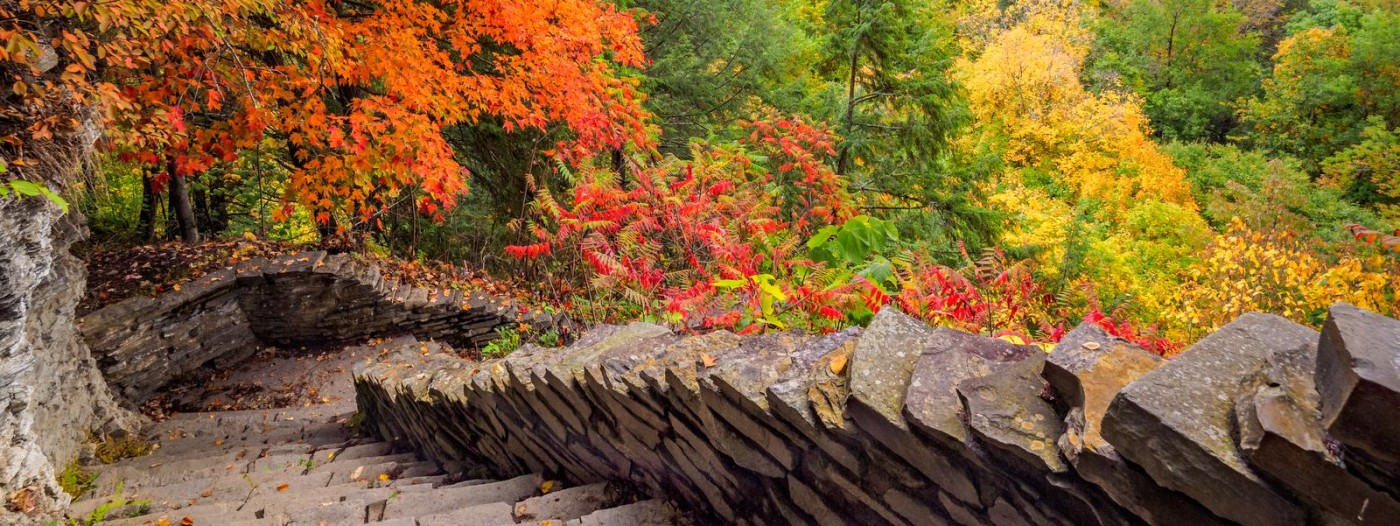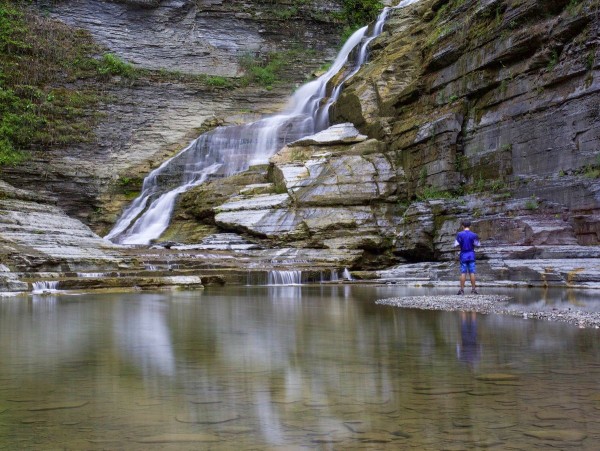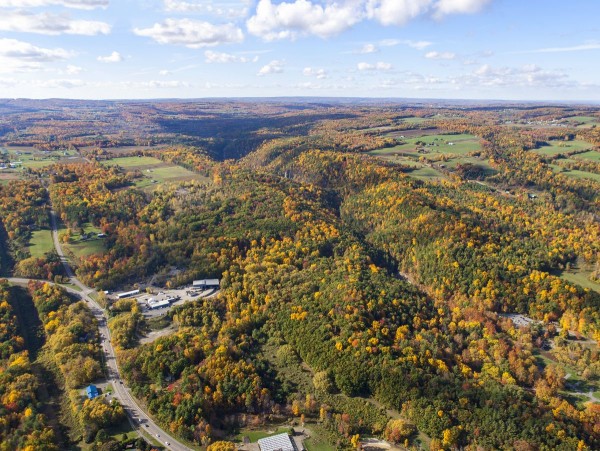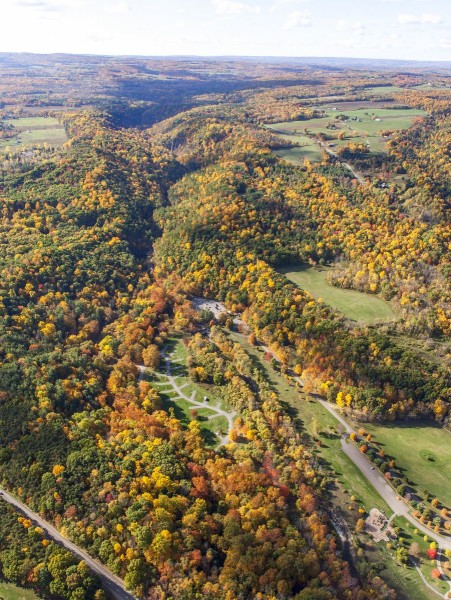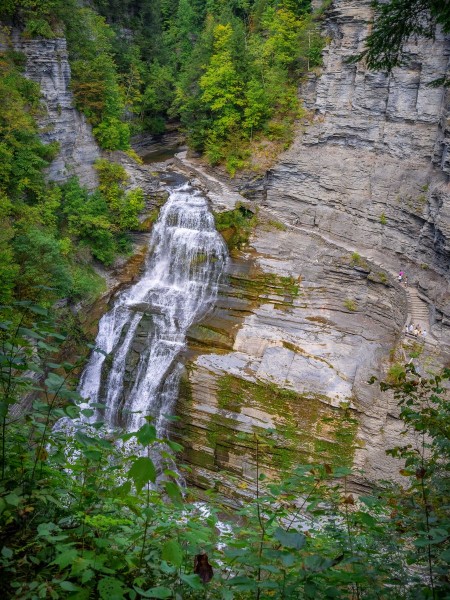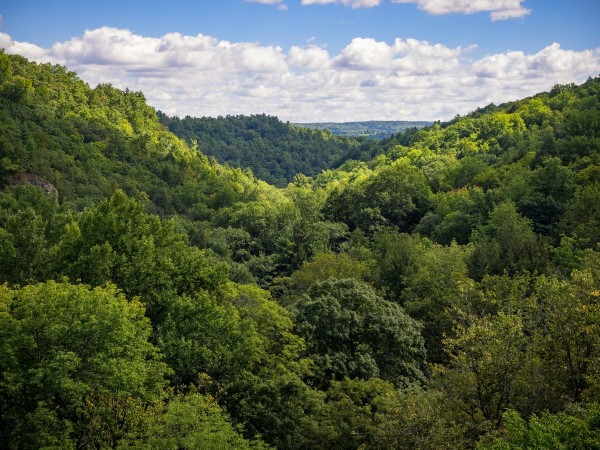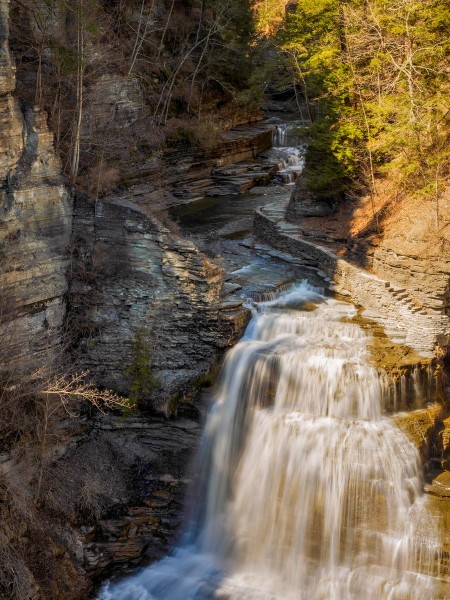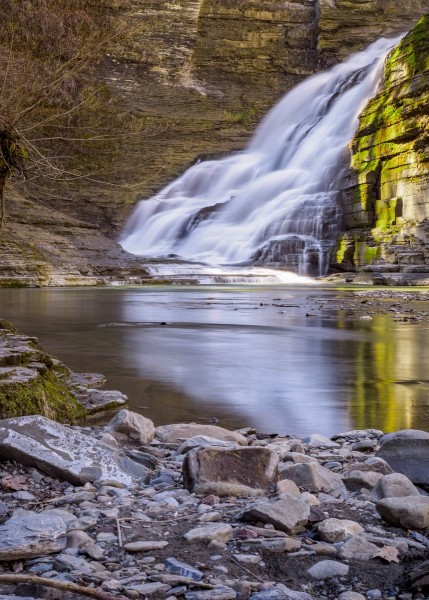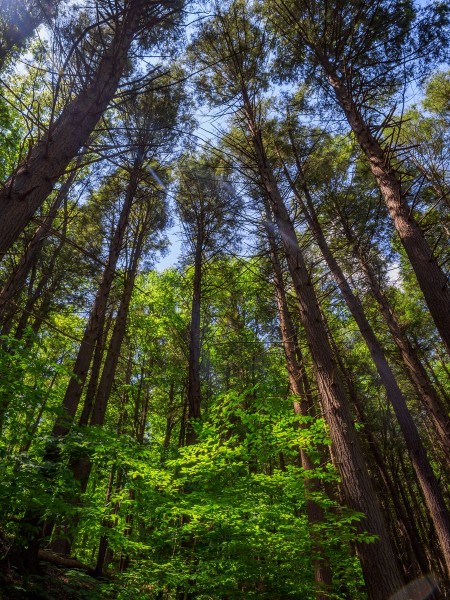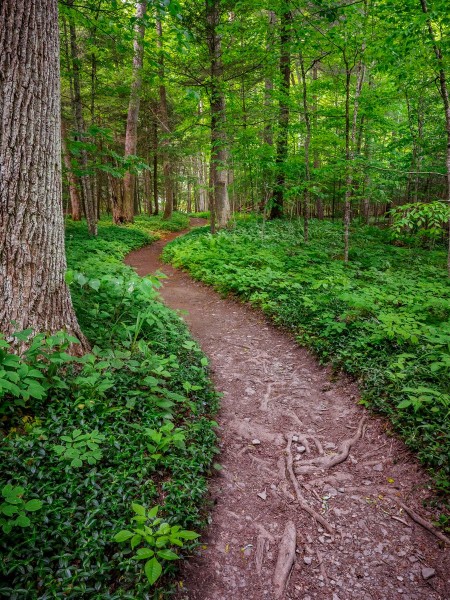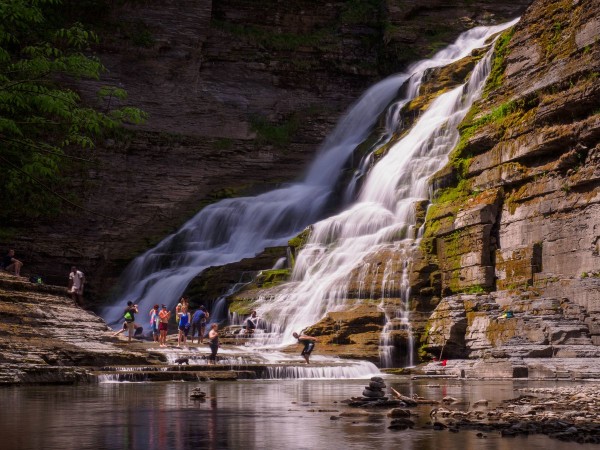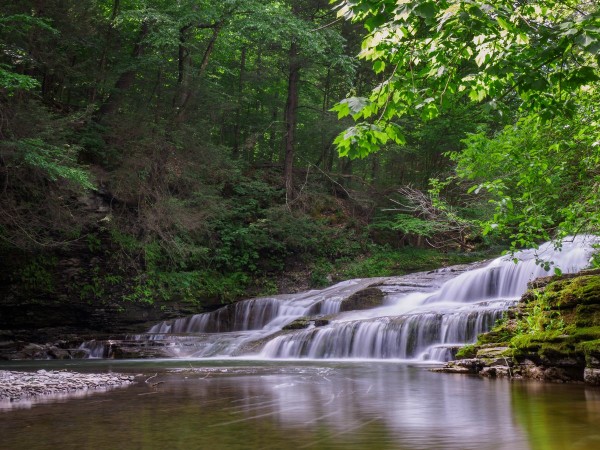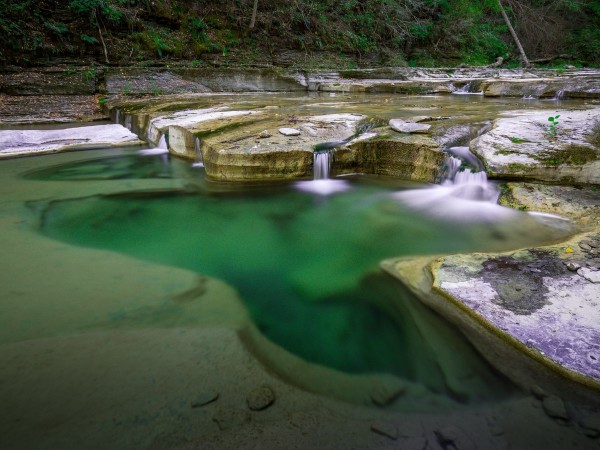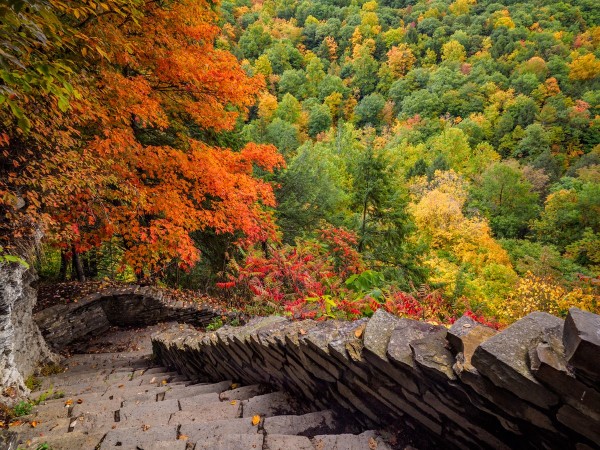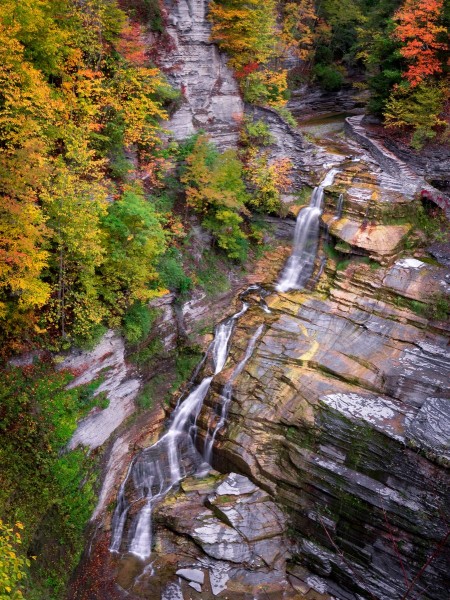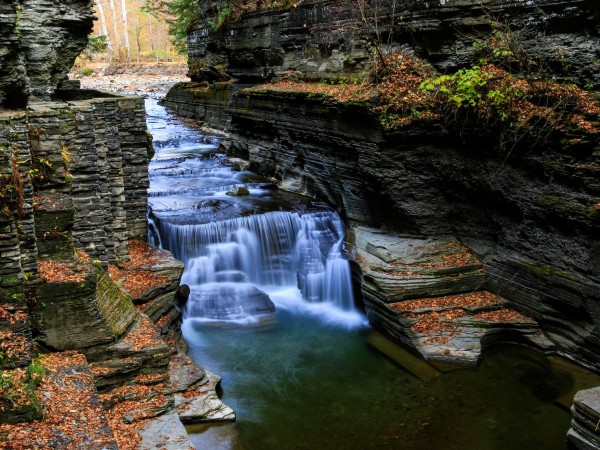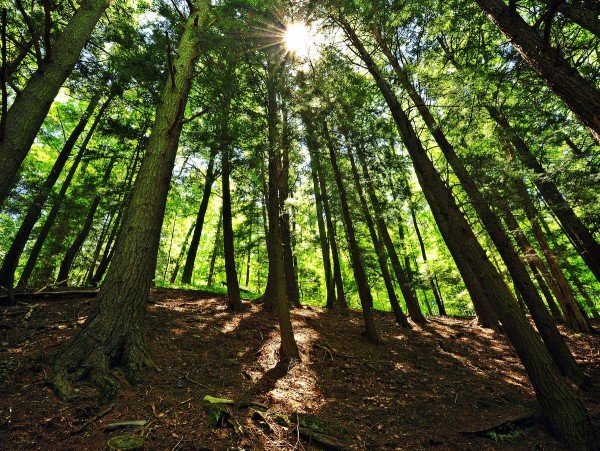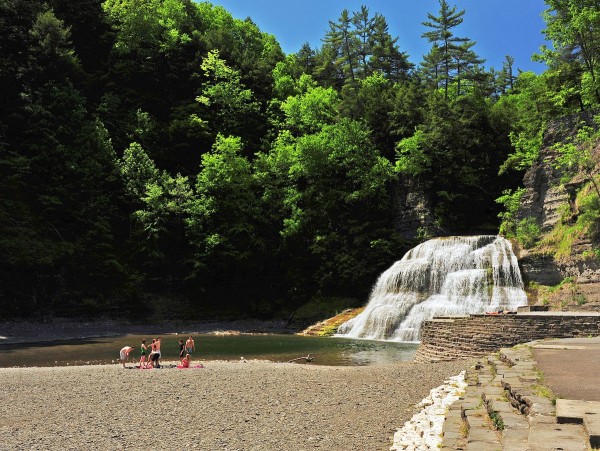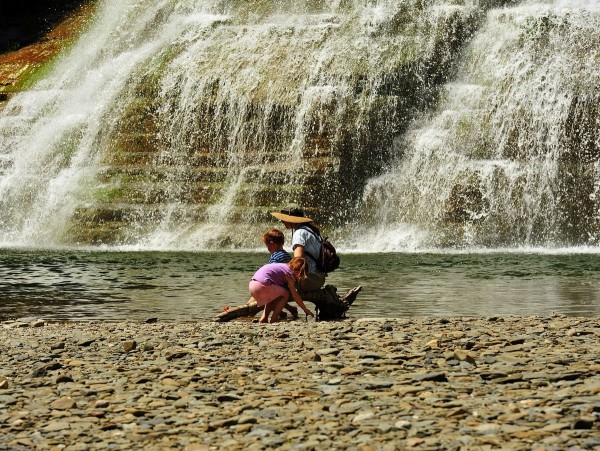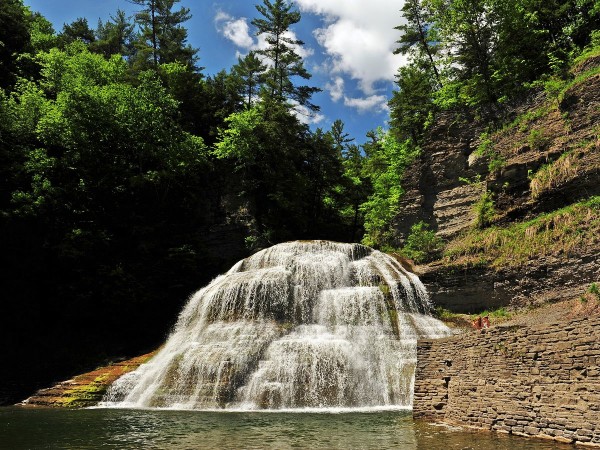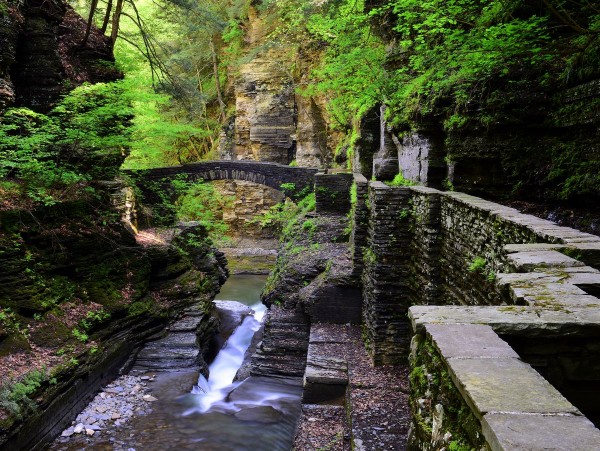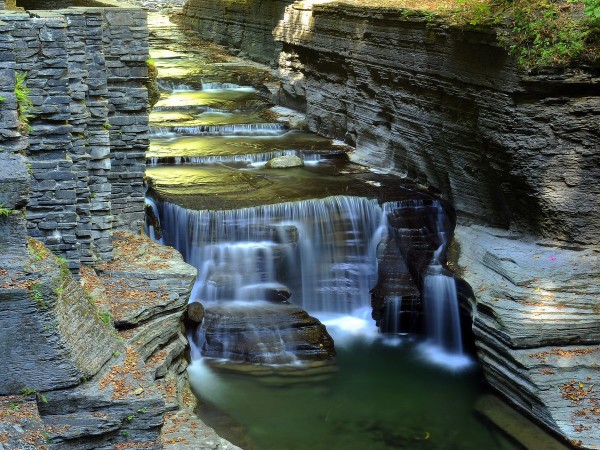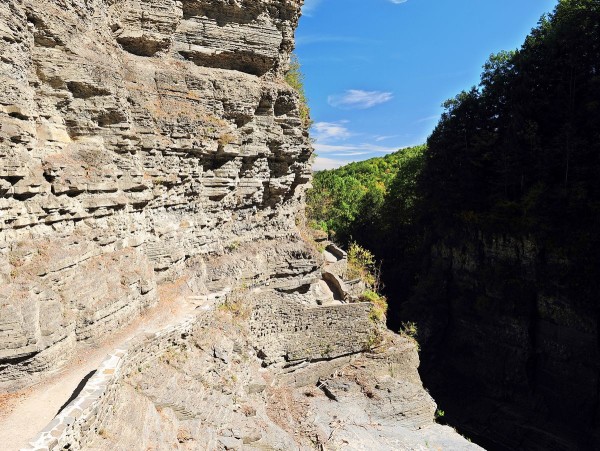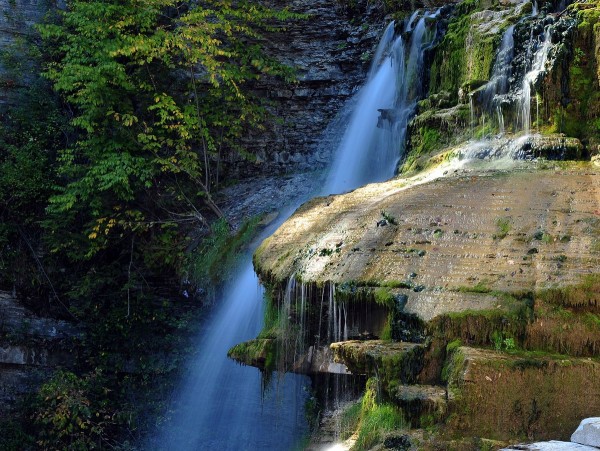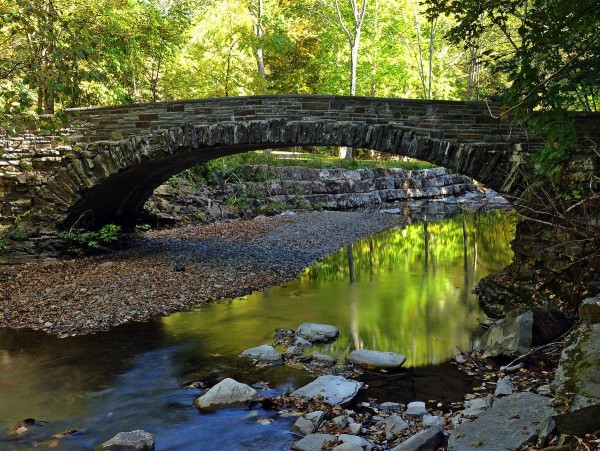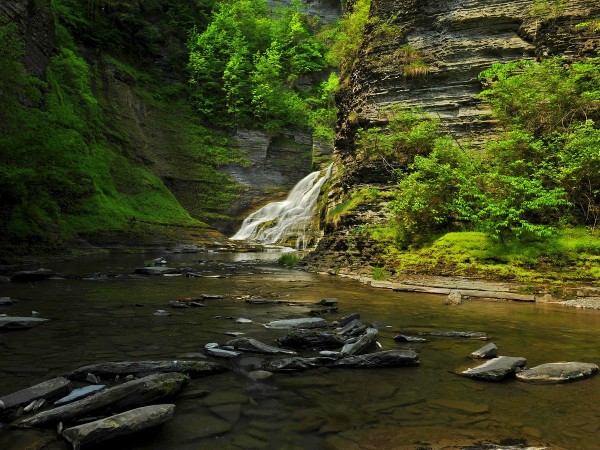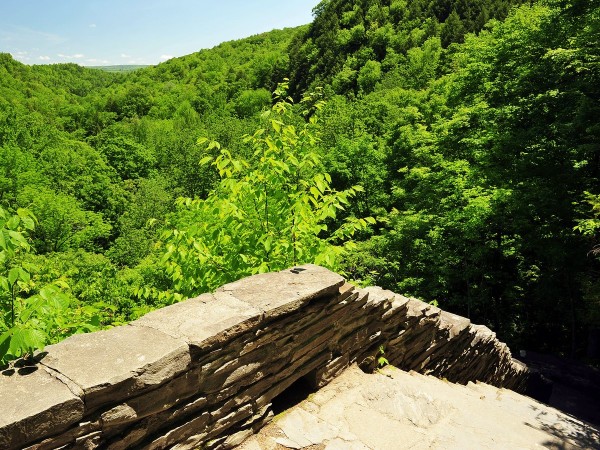While other gorge parks hit you with some of their most dramatic views right from the start (including Buttermilk Falls, Watkins Glen, and Fillmore Glen), at Robert H. Treman, also known as Enfield Glen, you have to work just a little bit harder to get to the wow factor.
Mind you it is not much work, as the initial part of the gorge trail is relatively flat and meandering for a mile and three-quarters. But as you begin to hear thundering falls and see the route out of the gorge, it’s easy to see why “wow” might not be sufficient to describe the scene.
The 115-foot Lucifer Falls is clearly central, and the handsome stonework winding up along the sheer cliff is equally remarkable. The dramatic waterscapes continue in the “upper gorge” area and it is clear why visitors often linger in this stunning section.
A marvelous way to experience the gorge and Lucifer Falls is to walk up the Gorge Trail and then climb down the steep and long stone staircase along the Rim Trail. (Steep is actually an understatement, so if you don’t have good balance or healthy knees, avoid this return route. But note that there are several “can’t miss” lookouts with eye-popping views available along the Rim Trail before reaching the steep steps.)
While climbing to and beside Lucifer Falls, try to visualize yourself and the path. When you reach the lookouts along the Rim Trail on the opposing cliff, there is no doubt you will be astonished just how high and narrow the passage up through the gorge to the falls actually is. Like many state parks, the beautiful work done by the Civilian Conservation Corps (CCC) can be admired for its appearance but also in the feat of constructing the trail which literally clings to the sheer cliff.
As is the case throughout the Finger Lakes region, the park’s unique and stunning scenery is also the product of glaciation, but in Enfield Glen, a slightly different process is revealed. The gorge was formed in two distinct phases. During a period of interglacial melt, a gorge (referred to as the “old gorge”) had formed in the lower portion of the park. When the glaciers advanced once again, the sheets of ice-filled in the gorge with glacial till. After the final glacier receded, a “new gorge” formed in the upper portion of the park. The water from the “new gorge” quickly swept away the glacial till revealing two gorges similar in genesis but unique in character. Lucifer Falls marks this boundary between the two and visitors of other gorge parks will note the similarities that the upper gorge has with Buttermilk Falls while the lower gorge is more akin to the feeling within Taughannock Falls.
Like other gorge state parks, Robert Treman has a swimming area, campgrounds, handsome stonework, and stunning waterfalls. Like Buttermilk Falls State Park, the swimming area is beneath a beautiful waterfall and is extraordinarily popular during the summer. In fact, many of the park’s visitors are only there for the swimming so expect fewer hikers along the trail than the full parking lots might imply. Unlike other gorge parks, there is only one rim trail and portions of it are actually within the gorge. As such, much of the trail system is closed during the off-season, November-May (visit the park’s web site for current trail status).
However, there is a beautiful stretch of the Finger Lakes Trail (FLT) that runs through Treman as well. For the more adventurous, follow the FLT beyond Treman to Lick Brook Gorge and then all the way to Buttermilk Falls State Park.

